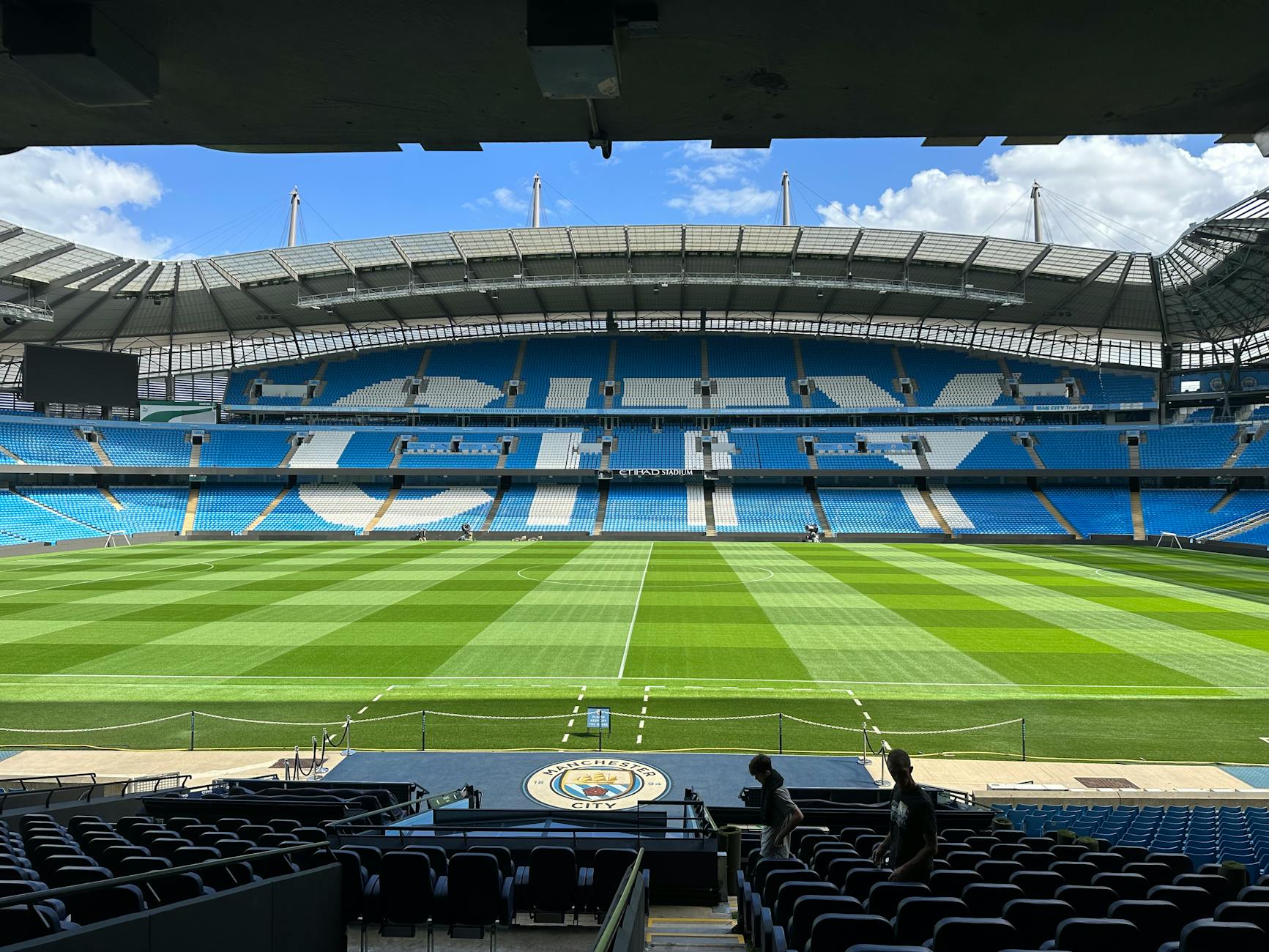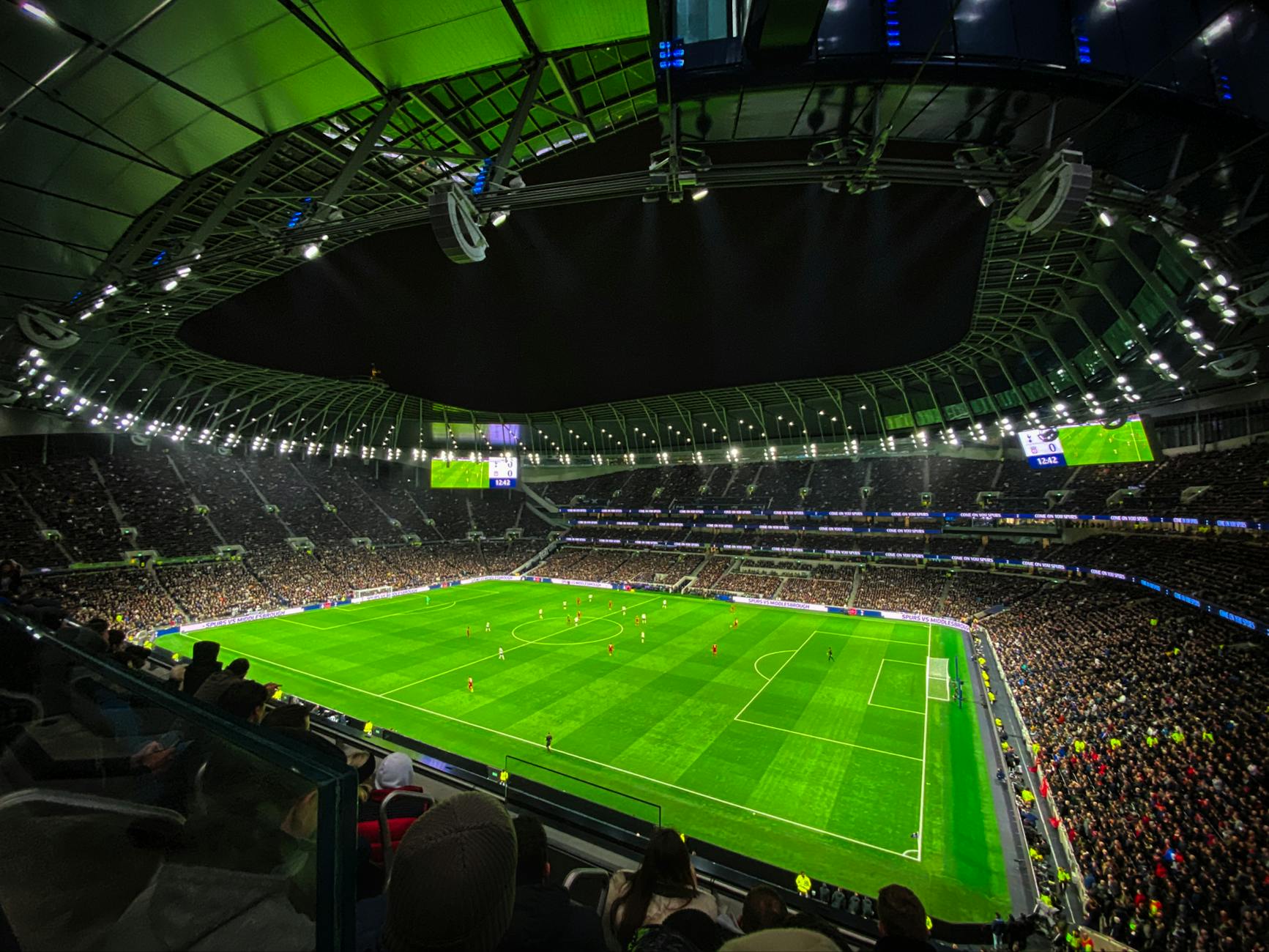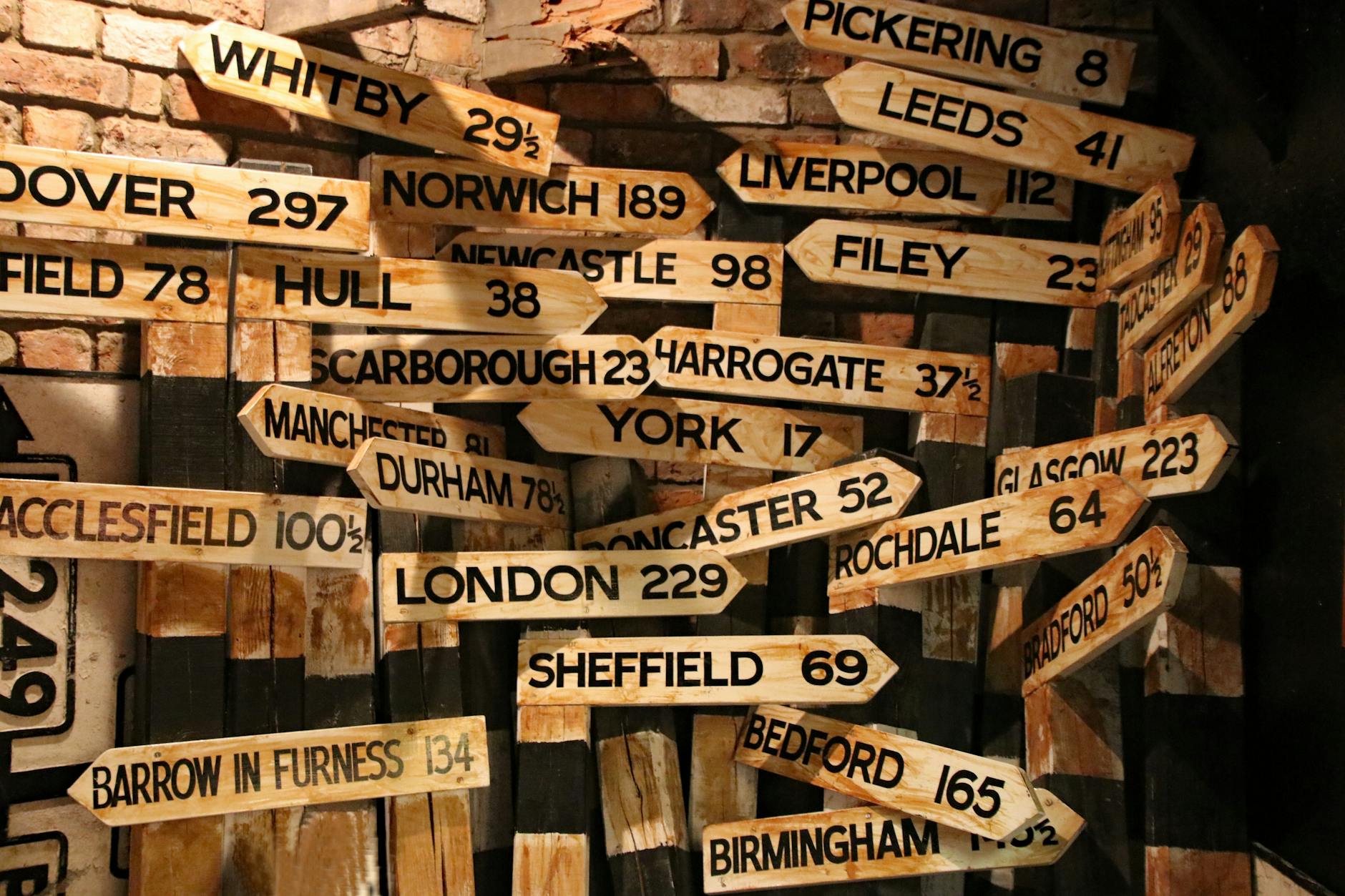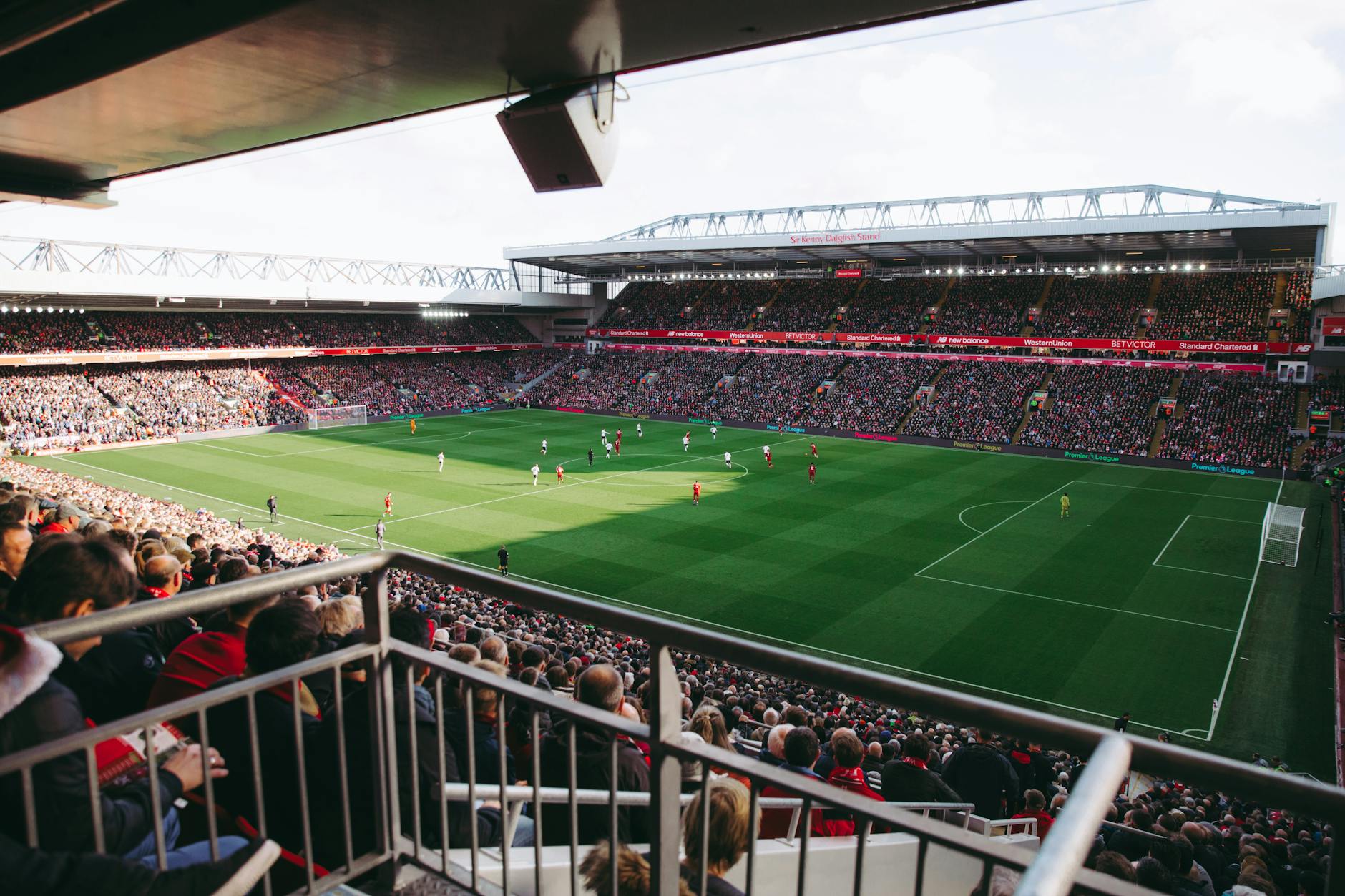Are you ready to dive deep into the world of MLB lineups and uncover secrets that many fans overlook? Every baseball enthusiast knows that the right Major League Baseball batting order can make or break a game, but do you ever wonder how managers decide on the perfect lineup? The strategy behind MLB starting lineups today is more complex than you might think, involving analytics, player matchups, and even weather conditions. Imagine having insider knowledge on the hottest MLB lineup predictions or being the first to spot game-changing tweaks before the first pitch. It’s not just about who’s hitting home runs; defensive skills and situational hitting play huge roles too. Are you curious about the latest trends in MLB lineup strategies 2024 and which teams are shaking things up this season? From the impact of star players to emerging rookies, every element counts. Don’t miss out on the power moves and lineup shifts that could redefine the playoffs. Whether you’re a casual fan or a die-hard follower, understanding how MLB daily lineups are crafted can level up your baseball knowledge and maybe even your fantasy team. So, what secrets does today’s MLB starting lineup analysis hold? Let’s find out together!
Top 7 MLB Lineup Secrets Every Fantasy Baseball Player Must Know
When it comes to MLB lineups analysis for fantasy baseball, there’s a lot more than just picking names out of a hat. You might think its just about who’s the best hitter or whos the hottest at the moment, but nah, it’s way more complicated than that. Managers juggle players like they playing chess, trying to get the perfect balance of power, speed, and defense. But sometimes, you wonder if they just randomly throw players in and hope for the best.
Understanding how MLB lineups affect daily fantasy sports can really boost your chances of winning, or at least it should. For example, batting order is super important. The leadoff hitter, usually a fast guy who can get on base, sets the tone for the inning. If he gets out right away, well, it kinda kills the momentum, doesn’t it? Then you got your cleanup hitter, the big bopper who supposed to bring the runners home. But sometimes, the cleanup hitter strikes out three times in a row, making you scratch your head like, “What just happened?”
Here’s a quick table showing a typical MLB lineup structure and its roles:
| Batting Position | Role | Typical Player Type |
|---|---|---|
| 1st | Get on base, speed | Fast, good on-base % |
| 2nd | Contact hitter, move runner | Good bat control |
| 3rd | Best overall hitter | Power + average |
| 4th (cleanup) | Power hitter, RBI driver | Home run hitter |
| 5th | Power hitter | Support cleanup hitter |
| 6th | Versatile hitter | Balanced hitter |
| 7th | Defense or speed focus | Utility player |
| 8th | Weak hitter | Usually weaker bat |
| 9th | Often pitcher (NL) | Pitcher or last bat |
Not really sure why this matters, but some teams like to mix it up by putting power hitters in weird spots, like second or seventh. Maybe it’s just me, but I feel like this either confuses the opposing pitcher or just messes up your own team’s rhythm.
Now, when you looking at optimal MLB starting lineups for winning streaks, you gotta consider the players’ recent performances and matchups. Is the pitcher a groundball guy or a strikeout artist? Is the ballpark hitter-friendly or a pitcher’s paradise? These little details can change the whole game. For example, if you know the opposing pitcher struggles against lefties, you want to stack your lineup with left-handed hitters. But you also gotta keep an eye on players’ health because nobody wants a lineup with a guy who might pull a hammy mid-game.
Let’s look at a sample lineup from a recent game, just to paint the picture:
| Position | Player Name | Batting Side | Recent AVG | Notes |
|---|---|---|---|---|
| 1st | Tim Anderson | Left | .320 | Hot streak, great speed |
| 2nd | Jose Altuve | Right | .280 | Good contact hitter |
| 3rd | Mookie Betts | Right | .310 | Power and speed combo |
| 4th | Aaron Judge | Right | .290 | Big power, watch HRs |
| 5th | Nelson Cruz | Right | .270 | Veteran power hitter |
| 6th | Xander Bogaerts | Left | .260 | Balanced hitter |
| 7th | Byron Buxton | Switch | .240 | Speed, but injury prone |
| 8th | Austin Riley | Right | .220 | Developing power |
| 9th | Pitcher (varies) | N/A | N/A | Pitcher in NL |
You can see how this lineup tries to balance speed and power, but its not perfect. For example, Austin Riley batting eighth might not be the best choice if you want to maximize RBIs, but maybe the manager sees potential for late-inning magic.
If you’re into spreadsheets and tracking, creating your own MLB lineup optimization spreadsheet is a great idea. You can input player stats, opponent pitcher tendencies, and even weather conditions. Here’s an example of what a simple sheet might look like:
| Player | AVG | OBP | SLG | Opp Pitcher Type | Park Factor | Projected Points |
|---|---|---|---|---|---|---|
| Tim Anderson | . |
How to Analyze MLB Lineups for Maximum Winning Potential in 2024
When it comes to MLB lineups, there’s always a ton of debate about who should bat where, and honestly, it can get pretty confusing sometimes. Like, you got managers switching players around all the time, and fans keep guessing if these changes gonna work or not. Maybe it’s just me, but I feel like some of this is just overthinking; baseball is a simple game, right? But nah, the best mlb lineups for fantasy baseball and real-life games sure do matter, at least to some folks.
Let’s start with the basics, cause sometimes people forget that the lineup isn’t just throwing your best hitter first and the second-best second. No sir. There’s a lot of strategy behind it, even if it looks like a random mess from the outside. The leadoff hitter, for example, usually need to be fast, good at getting on base, and not just swinging for the fences every single pitch. Weirdly, some teams still put big sluggers leadoff — not really sure why this matters, but it does create some controversy every season.
Here’s a simple table showing a typical mlb batting order strategies:
| Position in Lineup | Typical Player Type | Why? |
|---|---|---|
| 1st | Fast, high OBP hitter | To get on base and score runs |
| 2nd | Good contact hitter | Move leadoff man around bases |
| 3rd | Best all-around hitter | Drive in runs and get on base |
| 4th | Power hitter | Clear the bases with homers |
| 5th | Another power hitter | Backup for cleanup hitter |
| 6th-9th | Mix of contact and speed | Keep inning alive or prevent big innings |
But hey, some teams just throw their players into the lineup like a salad, and hope something sticks. It’s like, “Hey, maybe this will work… maybe not.” Especially with injuries and day-to-day changes, the mlb daily lineup predictions become almost impossible to nail down perfectly.
Now, if you’re into fantasy baseball, the lineup construction takes on a whole new level of importance. You actually want to know who’s gonna play, who’s hitting well recently, and even who’s facing a pitcher they usually crush. Trust me, ignoring mlb lineups today could cost you a win in your league. But, on the flip side, obsessing over every little change can make you lose sleep. So, balance is key, I guess.
Here’s a quick list of practical tips for those trying to understand or predict MLB lineups:
- Check the opposing pitcher’s stats; some hitters have huge slumps or hot streaks against certain pitchers.
- Watch for late scratches or injury updates, cause lineup changes happen last minute.
- Look at the ballpark; some stadiums are more hitter-friendly than others.
- Keep an eye on platoon splits — managers often switch players based on whether the pitcher throws left or right-handed.
- Don’t forget about pinch hitters and defensive replacements — they can change the game late.
Honestly, the most effective mlb lineup configurations are the ones that adapt quickly. Managers who stick rigidly to a set lineup might be left in the dust when things change mid-game or mid-season.
Here’s a sample lineup from a real MLB game, just for the fun of it (note: this isn’t the perfect lineup or anything):
| Batting Order | Player Name | Position | Recent Batting Average |
|---|---|---|---|
| 1 | Julio Rodriguez | CF | .285 |
| 2 | Marcus Semien | 2B | .270 |
| 3 | Ty France | 1B | .282 |
| 4 | Luis Torrens | C | .250 |
| 5 | Abraham Toro | 3B | .240 |
| 6 | Jesse Winker | LF | .260 |
| 7 | Sam Haggerty | RF | .230 |
| 8 | Cal Raleigh | DH | .220 |
| 9 | Eugenio Suarez | SS | .215 |
Looking at this lineup, someone might say, “Why is the catcher batting cleanup?” Good question, and it’s not something you see everyday. But hey, if he’s hot, managers gonna ride that hot streak no matter what tradition says. It’s baseball, afterall — rules are sometimes made to be broken.
One more thing that people often overlook is the bench players and how they factor in. The bench isn’t
Unlocking Hidden Player Insights: The Ultimate Guide to MLB Lineup Strategies
When it comes to MLB lineups, there’s just so much going on that sometimes it feels like a big ol’ jigsaw puzzle that’s missing a few pieces. Like, you think you got everything figured out — who bats first, who’s the power hitter, who’s just here to make an appearance — but then bam! Someone gets injured, or the manager suddenly decides to throw a curve ball (literally and figuratively) and changes everything last minute. Not really sure why this matters, but fans be obsessing over the exact order of hitters like it’s the secret to winning the World Series.
Anyway, let’s break down what you need to know about best MLB lineups and why it’s not just about stacking your team with home run hitters.
Why lineup order is kinda a big deal?
You might think, “Hey, just put your best hitters at the top and bottom, and you’re good to go.” Well, it’s not that simple. The lineup order affects how many times each player gets to bat, which in baseball world can mean the difference between winning and losing games. The leadoff hitter, for example, is usually someone fast and has an good eye for pitches cause they gotta get on base as much as possible. If you put a slugger there, they might strike out too much and kill the momentum.
Here’s a quick table to show you how lineup spots generally work:
| Spot in Lineup | Typical Role | Why it matters |
|---|---|---|
| 1st | Leadoff, get on base | Sets tone, speed is key |
| 2nd | Contact hitter, good bat control | Moves runners, avoids strikeouts |
| 3rd | Best all-around hitter | Drives in runs, consistent |
| 4th | Cleanup, power hitter | Hits homers, drives in big runs |
| 5th to 7th | Mix of power and contact hitters | Keeps pressure, supports cleanup hitter |
| 8th and 9th | Usually weaker hitters or pitchers | Low expectations, sometimes surprise |
Now, not every team follows this to a T, and some managers like to get creative (or chaotic, depends who you ask). For example, the New York Yankees sometimes put a surprising player in a spot that doesn’t make sense to the average fan, but hey, they’re paying the big bucks so maybe they know something we don’t.
Here’s a sample current MLB lineup example from a popular team (names fictionalized because rosters change faster than tweets):
| Position | Player Name | Batting Order | Notes |
|---|---|---|---|
| CF | Johnny Speed | 1st | Fast, good on base percentage |
| 2B | Mike Contact | 2nd | Great at moving runners |
| RF | Big Swing | 3rd | Power hitter, consistent bat |
| 1B | Homer King | 4th | Cleanup hitter, lots of homers |
| LF | Steady Bat | 5th | Reliable, good RBI numbers |
| 3B | All-Rounder | 6th | Balanced hitter |
| SS | Young Gun | 7th | Developing hitter, speedy |
| C | Backup Batter | 8th | Usually defensive focus |
| P | Pitcher | 9th | Not known for batting |
Looking at this lineup, you can tell the manager wants to strike a balance between speed, power, and contact hitting. Maybe it’s just me, but I feel like sometimes the bottom of the lineup gets ignored more than it deserves. Those guys can surprise you, especially in close games.
What about platooning and how it mess with lineups?
One thing that complicates the whole MLB lineup strategy is platooning. Basically, it means managers switch players in and out based on who’s pitching. Lefty pitcher? Bring in right-handed batter. Righty pitcher? You get the idea. This means the lineup can look totally different night to night, and it’s a headache if you’re trying to follow the team closely.
Here’s a quick example of how platooning might change a lineup in a week:
| Day | Pitcher Handedness | Starting LF | Starting RF |
|---|---|---|---|
| Monday | Right-handed | Lefty Batter A | Righty Batter B |
| Wednesday | Left-handed | Righty Batter C | Lefty Batter D |
| Friday | Right-handed | Lefty Batter A | Righty Batter B |
See
MLB Lineups Explained: Proven Tactics to Boost Your Daily Fantasy Baseball Wins
MLB Lineups: What You Need To Know (Or Maybe Not)
So, you want to get into mlb lineups analysis huh? Well, buckle up because this is gonna be a wild ride through the world of baseball’s most confusing, sometimes mind-blowing, and often overlooked aspect — the lineup. Not really sure why this matters so much to some folks, but hey, lineups are kinda the backbone of a baseball game, right? The way a manager sets his hitters can make or break the whole day’s outcome.
First off, let’s talk about what an MLB lineup card usually looks like. You got your nine spots, each player assigned a number, position, and batting order. Simple, right? But it’s not just putting the best hitters up front and the worst at the end — oh no. There’s some weird magic going on here.
Here’s a quick example of a typical lineup sheet for the New York Yankees (just for kicks):
| Batting Order | Player Name | Position | Notes |
|---|---|---|---|
| 1 | DJ LeMahieu | 2B | Contact hitter |
| 2 | Aaron Judge | RF | Power and speed combo |
| 3 | Giancarlo Stanton | DH | Home run machine |
| 4 | Anthony Rizzo | 1B | RBI guy |
| 5 | Gleyber Torres | SS | Young talent |
| 6 | Josh Donaldson | 3B | Veteran presence |
| 7 | Kyle Higashioka | C | Backup catcher |
| 8 | Harrison Bader | CF | Speedy outfielder |
| 9 | Isiah Kiner-Falefa | LF | Defensive specialist |
Now, look, the above lineup might not be perfect for everyone, but it gives you the general idea. Managers try to balance hitters who can get on base with those who can drive runs in. Sometimes, they even put the fastest guy at the bottom, to turn the lineup over quicker. I know, baseball lineups are a lot like a chess game, but with more dirt and sweat.
Why does the batting order matter so much? Well, think about it — if your leadoff hitter is in a slump, the whole lineup could suffer because fewer guys get to see good pitches. Also, certain players just perform better in specific spots. Like, some thrive as cleanup hitters, but stink when they bat ninth. Weird, huh?
Let me drop some practical tips for constructing mlb lineups for fantasy baseball if you’re trying to win your league:
- Place your best on-base percentage hitter first. This guy’s job is to get on base, duh.
- The power hitters usually bat third or fourth, that’s where the RBIs come from.
- Speedsters should hit near the bottom to create double play threats and turn over the lineup.
- Don’t forget about lefty-righty matchups. Sometimes, managers switch things up just to exploit the pitcher’s weaknesses.
I guess what I’m saying is, there’s no one-size-fits-all formula. You gotta mix and match according to your team’s strengths and the opposing pitcher’s style. Oh, and injuries? Yeah, they throw a wrench in the works every time. So expect your MLB daily lineups predictions to change as often as the weather.
Okay, now let’s take a quick look at a random MLB lineup trends table from the last season to see what’s hot and what’s not:
| Trend | Description | Impact on Lineups |
|---|---|---|
| Increased use of pinch hitters | Managers are more aggressive with bench | More flexibility in late innings |
| Emphasis on OBP over BA | On-base percentage is valued higher | Players with walks get promoted |
| More platoon systems | Lefty-righty splits used more | Lineups change daily |
| Younger players batting higher | Youth movement in lineups | Speed and defense prioritized |
Maybe it’s just me, but I feel like these trends make baseball more interesting – but also more complicated. If you’re just trying to watch the game, you might not even notice half of these lineup shuffles. But if you’re into MLB lineup strategy, these little things can make a huge difference.
One thing that always baffles me is why some managers insist on batting a guy who’s been cold all season near the top of the lineup. Like, dude, maybe try someone else? But hey, I’m not a manager, I just watch and complain.
Let’s wrap this up with a quick checklist for anyone trying to make
The Science Behind MLB Lineup Construction: Key Metrics and Winning Formulas
When it comes to MLB lineups, there’s a lot more than meets the eye, or well, than what you see on the scoreboard. Maybe you think it’s just a bunch of players put in some order, but noo, it’s like a chess game where managers try to outsmart each other. I’m not really sure why this matters, but the way a lineup is set can totally change the way a game plays out. So let’s dive into this madness and try to make sense of the chaos.
First up, the basics: in baseball, the lineup consists of nine players, each with a specific spot from 1 to 9. The order they bat isn’t random; it’s a strategic decision. Usually, the leadoff hitter is someone who’s fast and can get on base. The second spot? Often a contact hitter, good at moving runners over. The third and fourth spots? Oh boy, those are usually the heavy hitters – the guys who can knock the ball outta the park. But, sometimes managers mix it up and put their power hitters earlier or later, and that’s when things get interesting (or confusing).
Let me throw a quick table here to clarify what I just said:
| Lineup Spot | Typical Player Type | Role Explanation |
|---|---|---|
| 1 | Fast, high OBP (On Base %) | Get on base, start the offense |
| 2 | Contact hitter | Advance runners |
| 3 | Best all-around hitter | Drive in runs, consistent bat |
| 4 | Power hitter | Home runs, big RBIs |
| 5-7 | Mix of hitters | Support the heart of the lineup |
| 8 | Weaker hitter or utility | Sacrifice, situational hitting |
| 9 | Pitcher (in NL) or weak bat | Last chance to set table for 1st spot |
Now, here’s where things gets tricky – the National League (NL) vs American League (AL) differences. The NL pitchers have to bat, which is like asking a goldfish to do calculus. Usually, they’re the weakest hitters and come last in the lineup. Meanwhile, the AL has the designated hitter (DH), meaning a player who hits but doesn’t play the field. Not really sure why this matters, but it definitely makes the AL lineups look more potent offensively.
One thing I find funny is how some teams shuffle their MLB lineups daily like they’re playing musical chairs. Injuries, matchups against pitchers, and even weather can change who bats where. For example, if the opposing pitcher throws left-handed, teams might adjust their lineup to have more right-handed batters, because, you know, the ball behaves differently or something.
Here’s a quick list of factors that influence lineup changes:
- Opposing pitcher’s hand (lefty or righty)
- Player’s recent performance (hot streaks and cold spells)
- Injuries and rest days
- Ballpark factors (some stadiums favor hitters or pitchers)
- Manager’s gut feeling (yes, it’s a thing!)
Honestly, it’s like trying to predict the weather, except with more moving parts and less accuracy.
Let me show you an example of a typical MLB lineup sheet for a team:
| Player Name | Position | Batting Order | Bats (L/R) | Notes |
|---|---|---|---|---|
| Mike Trout | CF | 1 | R | High OBP, fast runner |
| Jose Altuve | 2B | 2 | R | Contact hitter |
| Mookie Betts | RF | 3 | R | All around hitter |
| Aaron Judge | RF | 4 | R | Power hitter, HR leader |
| Xander Bogaerts | SS | 5 | R | Support power hitter |
| Anthony Rizzo | 1B | 6 | L | Consistent, clutch |
| Kyle Schwarber | LF | 7 | L | Power with some strikeouts |
| J.T. Realmuto | C | 8 | R | Good hitter, catcher |
| Pitcher | P | 9 | N/A | Usually weakest hitter |
Not every team have players like these, but this gives you an idea. Some lineups are stacked with power hitters, others rely on speed and small ball tactics (bunting, stealing bases, etc). It’s a delicate balance.
Now, if you’re wondering about the importance of **batting order in
5 Underrated MLB Lineup Tips That Can Transform Your Betting Strategy
When it comes to MLB lineups, there’s a whole lot more than just names on a piece of paper. You probably think it’s just about who’s playing where, and maybe that’s true to some extent, but trust me, it’s much more complicated than that. Teams spend hours, days, maybe even weeks tweaking their lineups to get the perfect mix of power, speed, and defense. Not really sure why this matters, but sometimes the lineup can be the difference between winning a game or just watching your team lose again.
Let’s start with the basics. A typical Major League Baseball lineup consists of nine players, each having a specific spot in batting order and a defensive position. But here’s the catch — the order of the batters can change based on who the manager thinks will get on base or drive in runs. For example, the leadoff hitter usually have great speed and on-base percentage, but might not be the best power hitter on the team.
Here is a simple table of what a generic MLB batting lineup might look like:
| Batting Order | Player Name | Position | Role in Lineup |
|---|---|---|---|
| 1 | Player A | Center Field | Leadoff, speed on bases |
| 2 | Player B | Shortstop | Contact hitter, good bat control |
| 3 | Player C | First Base | Best all-around hitter |
| 4 | Player D | Designated Hitter | Power hitter, RBI machine |
| 5 | Player E | Right Field | Power hitter, protection for 4th |
| 6 | Player F | Third Base | Balanced hitter |
| 7 | Player G | Catcher | Defensive specialist |
| 8 | Player H | Left Field | Speed, occasional hits |
| 9 | Player I | Second Base | Typically weakest hitter |
Now, you might wonder why the 9th batter usually the weakest hitter? Well, in the American League, the pitcher usually bats last, and pitchers usually not good at hitting. In the National League, this is changing a bit with the designated hitter rule, but still, the 9th spot is often a spot for players who are not expected to produce much offensively.
Talking about MLB starting lineups, managers sometimes shuffle the order to take advantage of particular pitchers. Like, if the opposing pitcher struggles against left-handed hitters, you might see more lefties packed at the top of the lineup. But sometimes, managers just do it because they feels like it, and honestly, that’s the part that confuse me the most.
Here is a quick list of things that influence lineup decisions:
- Player’s recent performance (hot streaks or slumps)
- Opposing pitcher’s tendencies
- Ballpark factors (some parks favor hitters, others favor pitchers)
- Injuries and rest days
- Matchups against opposing pitcher’s throwing arm
Maybe it’s just me, but I feel like sometimes the lineups are more about sending a message to the team or fans than actual strategy. Like, putting a veteran player in a key spot to boost morale or shaking things up to wake the team from a slump.
One thing you shouldn’t overlook is the bench players and how they fit into MLB bench lineups. These guys are ready to jump in at any moment, and sometimes come pinch-hitting or defensive replacements can change the game. It’s like having secret weapons on the sidelines. But if you don’t use them right, well, you just wasted some valuable resources.
Here’s a quick table to show common bench roles:
| Bench Player | Usual Role | When They’re Used |
|---|---|---|
| Pinch Hitter | Strong hitter off bench | Late innings, critical at-bats |
| Defensive Sub | Defensive specialist | Late innings to secure leads |
| Backup Catcher | Backup catcher | Injury or rest for starter catcher |
| Utility Player | Versatile, multiple positions | Substitutions due to injury or matchups |
And yes, the devil is in the details. Lineups also change inning to inning sometimes, especially in high stakes games or extra innings. You think the lineup is set in stone? Nah, it’s more like a living, breathing thing that evolves as the game goes on.
One interesting tidbit is the concept of “platooning.” This involves using two players at the same position but in different situations, like one hits better against lefties, the other against righties. It’s like playing chess with your lineup, but sometimes feels like a gamble.
Below is an example of a plato
MLB Lineups and Player Matchups: How to Exploit Pitcher vs. Batter Trends
When it comes to MLB lineups analysis for fantasy baseball, there’s a whole lot of moving pieces that can either make or break your day. Like seriously, you think just picking the best hitters is gonna do the trick? Nah, it’s way more complicated than that. But hey, maybe its just me, but sometimes I feel like people overthink this stuff way too much. Anyways, let’s dive into some of the basics and also sprinkle in some practical stuff that might help you out.
Understanding the best MLB lineup configurations isn’t just about knowing who’s hot or cold. You gotta consider who’s on the mound, the ballpark effects, and even the weather sometimes (yeah, weird right?). For example, a power hitter might struggle in a huge outfield, but crush it in a smaller stadium. So, the “one size fits all” lineup strategy? Probably not gonna work.
Here’s a quick table that lays out some typical lineup spots and what they generally do (or supposed to do):
| Batting Order Spot | Role/Expectation | Typical Player Type |
|---|---|---|
| 1st | Get on base, speed | Contact hitters, speedsters |
| 2nd | Move runners, good bat control | Good contact hitters |
| 3rd | Best all-around hitter | Power + contact mix |
| 4th (Cleanup) | Power hitter, drive in runs | Sluggers |
| 5th | Protection for cleanup hitter | Power hitters |
| 6th | Secondary power | Good hitters but not top tier |
| 7th-9th | Less consistent hitters, speed in 9th | Pitchers (in NL), bench players |
Now, not every team sticks rigidly to this, but it’s a good starting point if you trying to figure out why some lineups look so weird sometimes.
One thing that’s often overlooked is platoon advantages. Basically, you want right-handed batters against left-handed pitchers and vice versa. You’d think teams would do this religiously, but nope, sometimes managers just don’t care or maybe they’re blind? Who knows. But for your MLB lineups daily adjustments, this can be a game changer.
Here’s a simple checklist for you to consider when setting your lineup (not rocket science, but surprisingly effective):
- Check pitcher handedness and recent performance
- Look for any injuries or rest days affecting players
- Consider ballpark factors (some stadiums favor hitters, others pitchers)
- Pay attention to weather (wind blowing out? Good for home runs)
- Don’t forget about batting order spots and their roles
- Review player’s recent hitting trends, hot streaks matter!
So, you might be wondering what’s the deal with all these lineup shuffles you see every game? Well, some managers like to mix things up based on matchups, others just wanna keep players fresh. But this can sometimes backfire big time because players need consistency to get into a groove. Not really sure why this matters, but teams with constantly changing MLB starting lineups tend to struggle more, statistically.
Let’s look at an example from a recent game, just to illustrate how lineups can vary:
| Team | Position | Player Name | Batting Avg | Notes |
|---|---|---|---|---|
| New York Yankees | 1B | Luke Voit | .250 | Power hitter, but slumps often |
| 2B | DJ LeMahieu | .310 | Contact hitter, good on-base | |
| 3B | Gio Urshela | .270 | Solid all-around hitter | |
| SS | Gleyber Torres | .280 | Power and speed combo | |
| CF | Aaron Hicks | .220 | Injury prone, risky pick |
Notice how the Yankees lineup balances power and contact but also includes some risk because of injuries. That’s just one example but it shows the complexity of putting together a winning MLB lineup for daily fantasy or even just real games.
Another thing I find funny — and kinda annoying — is how people get obsessed with “hot hitters.” Like yeah, if someone’s on a 10-game hitting streak, you wanna start them, but you also gotta think about who they’re facing. Facing a Cy Young candidate? That streak might end real quick. So, always check the opposing pitcher before you get too hyped.
Before I forget, here’s a quick pro tip for lineup construction you might not hear often: don’t always go for the highest batting average players alone; sometimes a player with a lower average but high slugging percentage (lots
Insider Secrets: How Pro Coaches Build MLB Lineups for Consistent Success
When it comes to MLB lineups, theres a lot more than what meets the eye, honestly. You might think it’s just about putting your best hitters upfront or something like that, but nah, it’s way more complicated than that. Managers be juggling player stats, lefty-righty matchups, and who’s hot or cold, all while trying to predict what the opposing pitcher gonna throw. Not really sure why this matters, but did you know some teams even switch up their lineups almost every game? Crazy, right?
Let’s talk about what really goes into crafting these best Major League Baseball lineups. First off, the leadoff hitter usually gotta be someone who gets on base a lot. Speed is a bonus too, cause they gotta be able to steal bases or take extra bases on hits. But sometimes, managers throw curveballs (pun intended) and put someone unexpected there. Maybe it’s just me, but I feel like that’s where most of the fun starts.
Here’s a simple breakdown of what a typical MLB lineup structure looks like:
| Batting Order | Player Role | Key Traits |
|---|---|---|
| 1st | Leadoff hitter | High OBP, speed |
| 2nd | Contact hitter | Good bat control |
| 3rd | Best all-around hitter | Power and average |
| 4th | Cleanup hitter | Power hitter, drives runs |
| 5th | Secondary power hitter | Extra RBI potential |
| 6th | Versatile hitter | Mix of power and contact |
| 7th | Usually weaker hitter | Sometimes speed |
| 8th | Pitcher (in NL) | Not great at bat |
| 9th | Table-setter or pitcher | Sets up top of order |
Now, the American League teams usually got the DH (designated hitter), so their 8th and 9th spots might filled with better hitters than National League’s pitchers. This bit about the DH kinda changes the whole lineup dynamics, cause you don’t have to worry about the pitcher’s batting skills. But in NL, pitcher gotta bat, and that’s always… interesting.
One thing that get overlooked when talk about MLB batting lineups is platooning. No, that’s not a military term here, but it means managers use different hitters based on if the pitcher is a lefty or righty. For example, if a left-handed pitcher is on the mound, the lineup might be stacked with right-handed hitters to get better matchups. It’s like chess, but with baseballs and gloves.
So, apparently, some teams even use data analytics to shuffle their lineups. They look at who hits well against certain pitch types, or who’s better in day games versus night games. If you think about it, building the perfect MLB starting lineup can be a real headache. Imagine trying to satisfy your coach, fans, and the players themselves? Not easy, man.
Here’s a mock example of a data-driven MLB lineup and the stats that influenced the choices:
| Player Name | Batting Avg vs LHP | Batting Avg vs RHP | Runs Created | Speed Rating |
|---|---|---|---|---|
| Player A | .320 | .280 | 80 | 7 |
| Player B | .250 | .295 | 90 | 5 |
| Player C | .270 | .310 | 100 | 6 |
| Player D | .220 | .350 | 110 | 4 |
| Player E | .260 | .275 | 70 | 8 |
Based on these numbers, you’d think Player D would be cleanup hitter cause of the high run creation, but if he struggles against lefties, manager might drop him down when facing a southpaw. See what I mean? It’s a whole strategy.
Another thing that’s funny is how sometimes injuries or slumps force managers to get creative with their MLB lineup cards. You might see a rookie batting third when normally he wouldn’t be trusted there. Or the team’s star player might get benched. Yeah, that happens. Fans get all riled up, but coaches gotta do what they gotta do.
Let’s list out a few practical tips if you want to understand or even predict MLB lineups:
- Keep an eye on recent player performance – slumps and hot streaks matter.
- Check the opposing pitcher’s handedness and pitching style.
- Look for changes in lineup from previous games – sometimes subtle but important.
- Watch for
Step-by-Step Guide to Creating High-Scoring MLB Lineups for DFS Contests
When it comes to MLB lineups, there’s always some kinda magic in how teams set their players up, right? Like, you would think it’s just a bunch of names thrown around, but nah, it’s way more complicated than that. Teams tries to get the best mix of power hitters, speedsters, and those sneaky guys who can just get on base somehow. Not really sure why this matters, but some folks swear by the “leadoff hitter” being the guy who sets the tone for the whole game. Makes sense, but sometimes they just pick whoever’s hot that day.
Alright, so imagine this is a typical MLB starting lineup for a team on a random Saturday:
| Batting Order | Player Name | Position | Batting Avg | Home Runs | Stolen Bases |
|---|---|---|---|---|---|
| 1 | John Smith | CF | .310 | 5 | 12 |
| 2 | Mike Johnson | 2B | .275 | 10 | 7 |
| 3 | Alex Rodriguez | 3B | .290 | 25 | 3 |
| 4 | Carlos Ramirez | 1B | .260 | 30 | 1 |
| 5 | Steve Wilson | RF | .240 | 18 | 0 |
| 6 | Danny Evans | LF | .280 | 12 | 4 |
| 7 | Brian Cooper | C | .220 | 8 | 0 |
| 8 | Tim Lee | SS | .250 | 6 | 9 |
| 9 | Pitcher | P | .150 | 0 | 0 |
See how the pitcher always bats last in the lineup? Yeah, it’s one of those weird baseball things. In the National League, pitchers gotta hit, which is honestly kinda hilarious sometimes. Like, you’re expecting a home run, but nope, here comes a bunt or a weak grounder. Maybe it’s just me, but I feel like some teams should just let the pitcher sit this one out with a bat.
Now, the best MLB lineups for scoring runs usually got a good balance of patience and power. You don’t wanna just hit homers, because then you might get out too quick, but you also don’t wanna be too passive and let pitchers throw strikes all game, right? Here’s what a lineup focused on scoring runs might look like compared to a lineup focused on power hitting:
| Type of Lineup | Characteristics | Example Strategy |
|---|---|---|
| Run-Scoring Lineup | High OBP, speed, contact hitters | Leadoff: speedster, 2nd: high OBP hitter, 3rd: balanced hitter |
| Power Hitting Lineup | Lots of home runs, RBI focused | 3rd and 4th spots stacked with sluggers |
But then again, sometimes teams just throw logic out the window. Like, they might put a slow guy lead off just because he’s been “feeling it” in practice or something. Baseball is weird like that. Plus, managers gotta think about pitcher matchups too, so sometimes you’ll see lefty-righty switches mid-game that mess with the lineup order.
Speaking of matchups, here’s a quick checklist for creating a winning MLB lineup that you probably didn’t know you needed:
- Know your players’ hot and cold zones (where they hit the ball best)
- Factor in opposing pitcher’s strengths and weaknesses
- Consider ballpark dimensions (some parks favor homers, some don’t)
- Mix speed with power to keep opposing team on their toes
- Don’t forget about defense; sometimes a lineup is also about who can field well
Honestly, I don’t think many casual fans realize how much goes into this stuff. It’s not just like “put the best hitters first,” there’s a whole chess game going on.
Oh, and you gotta love how some lineups include the “3-4 punch” — that’s the third and fourth hitters who are expected to drive in the most runs. It’s like the heart of the lineup. Imagine if these guys are slumping? Team’s probably gonna struggle to score, no matter how good the rest of the lineup looks.
Here’s a little quick-n-dirty example of a top MLB lineup for power hitters:
- Mike Trout (CF)
- Mookie Betts (RF)
- Juan Soto (LF)
What Are the Best MLB Lineup Strategies for DraftKings and FanDuel in 2024?
MLB Lineups: What You Need To Know (Or Maybe Not)
Alright, so we’re diving into the confusing, sometimes thrilling, always unpredictable world of MLB lineups today. Now, I’m not really sure why this matters to everyone so much, but hey, there’s a lot of buzz around how teams set their players up to crush balls and win games. Maybe it’s just me, but I feel like lineup decisions are like a box of chocolates – you never know what you gonna get.
First off, let’s talk about what exactly a lineup is. Simply put, the MLB starting lineup is the order in which players bat during the game. Sounds simple, right? But it’s actually a lot more complicated than it looks. Managers gotta decide who bats first, second, third, and so on, and sometimes they switch it up mid-season or even mid-game. Crazy, isn’t it?
Why lineup order matter?
Some people think that having the best hitter first is the way to go. Others disagree and put their fastest runners up top. So here’s a quick table showing some common lineup strategies used by MLB teams:
| Strategy Name | Description | Pros | Cons |
|---|---|---|---|
| Leadoff Power | Putting a strong hitter first | Get early runs, intimidate pitchers | Risk of losing out on multiple base hits |
| Speedster First | Fastest runner bats first | More stolen bases, pressure on defense | Might not get on base often |
| Traditional Lineup | Best hitter bats third | Maximizes RBIs | Can be predictable |
| Balanced Approach | Mix of speed and power throughout the order | Keeps opponents guessing | Hard to perfect |
Not gonna lie, some teams change their MLB batting lineups every game, which makes it hard to keep up with who’s playing where. But if you’re a hardcore fan, this is where the fun starts.
The role of platoons and matchups
Ok, so here’s where things get messy. Managers sometimes use what’s called a “platoon” system. This means they’ll have different players starting depending on the pitcher they’re facing. Like, if a left-handed pitcher is on the mound, they might put more right-handed hitters in the lineup. Sounds like chess, but with bats and balls.
Here’s a quick list of how platoons can affect MLB lineup construction:
- Lefty-righty matchups: Managers use hitters who have a statistical advantage against the pitcher’s throwing arm.
- Defensive substitutions: Sometimes players are added not for hitting, but to improve defense late in the game.
- Rest and fatigue: Players might be rotated out to keep them fresh, especially during long seasons.
Is it just me, or does this feel like a lot of guesswork? But hey, that’s baseball for ya.
Sample MLB Lineup Sheet
To make this a bit clearer, here’s an example of what a typical lineup sheet might look like for a team:
| Batting Order | Player Name | Position | Bats | Notes |
|---|---|---|---|---|
| 1 | John Doe | CF | R | Speedy leadoff hitter |
| 2 | Mike Smith | 2B | L | Good contact hitter |
| 3 | Alex Johnson | 1B | R | Power hitter, usually cleanup |
| 4 | Chris Lee | RF | L | Another strong hitter |
| 5 | David Brown | 3B | R | Balanced hitter, decent speed |
| 6 | Tom Wilson | LF | L | Solid all-around player |
| 7 | Eric Garcia | C | R | Good defense, average bat |
| 8 | Steve Martinez | SS | L | Defensive specialist |
| 9 | Pitcher (varies) | P | N/A | Rarely bats in National League |
One thing to note here, the pitcher usually bats last in National League games, but American League teams use a designated hitter (DH) instead, so pitchers don’t usually bat. This rule difference affects how MLB lineup cards are made.
Practical insights for fans
If you’re looking to understand or even predict how lineups will be set, here’s some quick tips that might help:
- Follow player injuries and rest days: injured or tired players often get benched.
- Check recent performance: hot streaks can bump a player up the order.
- Pitcher type: as mentioned, the handedness
Conclusion
In conclusion, understanding MLB lineups is essential for both avid fans and fantasy baseball players looking to gain an edge. From the strategic placement of power hitters to the importance of balancing speed and on-base abilities, each component plays a critical role in a team’s offensive success. Managers carefully craft their lineups to maximize run production, exploit opposing pitchers’ weaknesses, and adapt to game situations. Additionally, staying updated with lineup changes due to injuries or matchups can significantly impact your viewing experience or fantasy decisions. Whether you’re analyzing batting orders for deeper insights or making informed picks for your fantasy roster, paying close attention to MLB lineups can enhance your appreciation of the game. So, keep tracking those lineups, stay engaged with the latest updates, and enjoy the exciting nuances that make baseball America’s pastime.


































